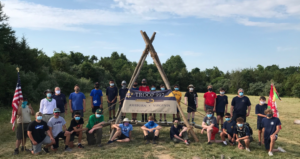 Like many, Ashburn Troop 997’s summer camp plans were put on hold due to COVID closures. But that didn’t stop the Troop from providing a high-quality summer experience for their Scouts while following all BSA, CBC and state rules and guidance. The Troop set up a campsite at the Hidden Meadow group campsite maintained by the Willowsford Conservancy.
Like many, Ashburn Troop 997’s summer camp plans were put on hold due to COVID closures. But that didn’t stop the Troop from providing a high-quality summer experience for their Scouts while following all BSA, CBC and state rules and guidance. The Troop set up a campsite at the Hidden Meadow group campsite maintained by the Willowsford Conservancy.
Led by Scoutmaster Terry Kolb and his adult team of volunteers, ASMs and Merit Badge Counselors, the Troop put together a mini-camp (five days of ‘day camp’ plus one night camping out) allowing the Scouts to earn a number of outdoor-oriented merit badges, including Pioneering, Soil & Water Conservation, Golf, Fishing, Astronomy and Search & Rescue. The Troop’s new Scouts also had the opportunity to work on early rank requirements. Highlights of the week included bridge-building, a search dog rescue demonstration, model-rocket launching, hiking at Manassas and biking around the Willowsford Farm community. Mid-week, the Troop gathered for an evening event, including the infamous Scoutmaster Campfire Extravaganza, an outdoor movie and an astronomy star party.
As the camp closed, the Scouts headed offsite to do trail maintenance for the Conservancy. In their newsletter, the Willowsford Conservancy complemented the Troop and the Leave No Trace principles of Scouting:
Last week, a troop of young scouts chose the Hidden Meadow Event Field as the site for their week-long scout mini-camp. We were excited to offer residents the ability to host camp at Willowsford, and delighted by the feedback from other residents about the care the scouts displayed toward nature and toward our community’s resources; true to the Scouts’ principles of “Leave no Trace.” They can be applied anywhere, at any time.

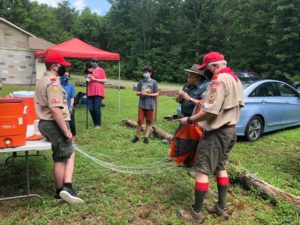

 So then I had to test it, but I didn’t know any high buildings or bridges that I could use. So then Ms. Trisha told me perhaps I could do it from the COPE wall at Camp Snyder and I said YES PLEASE! On Saturday we drove to Camp Snyder in Haymarket, Virginia and Ms. Trisha asked Mr. Waisanen, the NCAC COPE & Climbing Chair, if I could do my project and he said yes. We had to figure out how to drop it and how to collect the data I needed for the requirements. There was another adult, Mr. Lesko, who talked to me about how to throw or drop the parachute from the 24’ high tower. I chose static drop, because that was easier and more reliable for
So then I had to test it, but I didn’t know any high buildings or bridges that I could use. So then Ms. Trisha told me perhaps I could do it from the COPE wall at Camp Snyder and I said YES PLEASE! On Saturday we drove to Camp Snyder in Haymarket, Virginia and Ms. Trisha asked Mr. Waisanen, the NCAC COPE & Climbing Chair, if I could do my project and he said yes. We had to figure out how to drop it and how to collect the data I needed for the requirements. There was another adult, Mr. Lesko, who talked to me about how to throw or drop the parachute from the 24’ high tower. I chose static drop, because that was easier and more reliable for 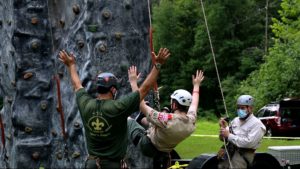 deploying and collecting data. I also had to figure out how to pull the parachute back up after each drop and how to stay at the top of the climbing tower and still be able to use my hands. The COPE teachers showed me how I could put my feet against the wall so I could use my hands. That was really cool! I had a looped cord all the way down that they tied the parachute on, so I could pull it up every time and I dropped the parachute 3 times. My mom took the hang time with a stopwatch and my friend Keefer checked the box to make sure it wasn’t damaged and to check the supplies inside. The box was still good after 3 drops, so my experiment was successful. After that I climbed down and we had to clean all the equipment we used with soap and water to make it safe for the next person to use.”
deploying and collecting data. I also had to figure out how to pull the parachute back up after each drop and how to stay at the top of the climbing tower and still be able to use my hands. The COPE teachers showed me how I could put my feet against the wall so I could use my hands. That was really cool! I had a looped cord all the way down that they tied the parachute on, so I could pull it up every time and I dropped the parachute 3 times. My mom took the hang time with a stopwatch and my friend Keefer checked the box to make sure it wasn’t damaged and to check the supplies inside. The box was still good after 3 drops, so my experiment was successful. After that I climbed down and we had to clean all the equipment we used with soap and water to make it safe for the next person to use.”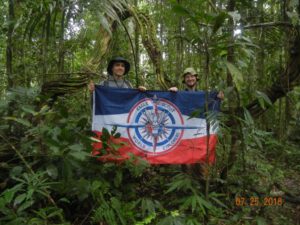
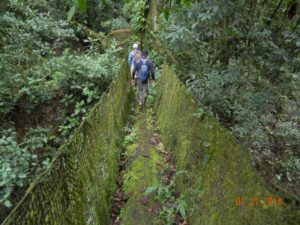

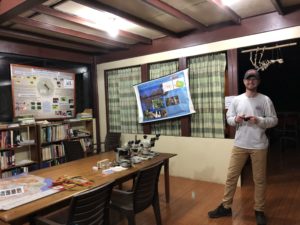
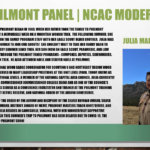


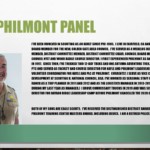

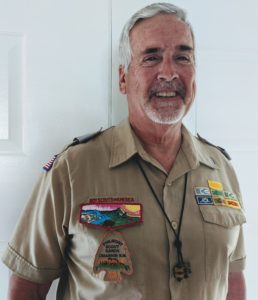 Panelist Tom Giugni:
Panelist Tom Giugni: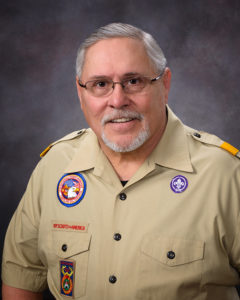 Panelist Jay Oakman:
Panelist Jay Oakman: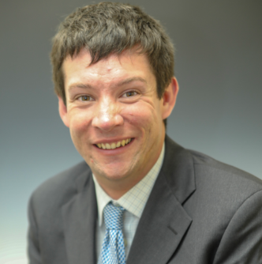
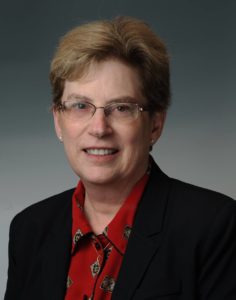 Panelist Arden Dougan:
Panelist Arden Dougan: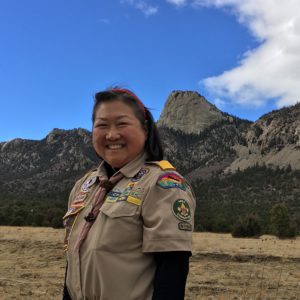
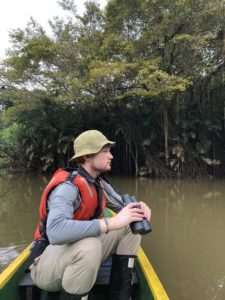 Speaker Evan Dann:
Speaker Evan Dann:
